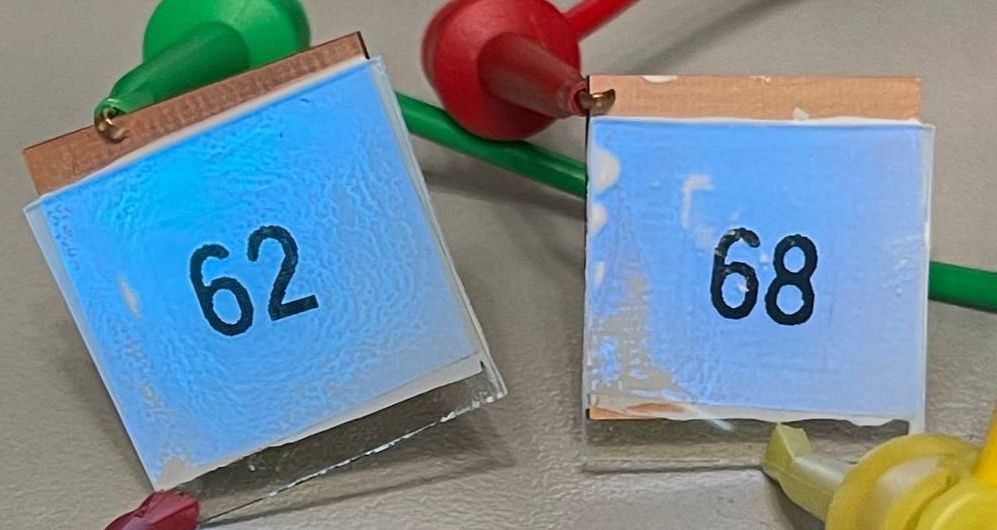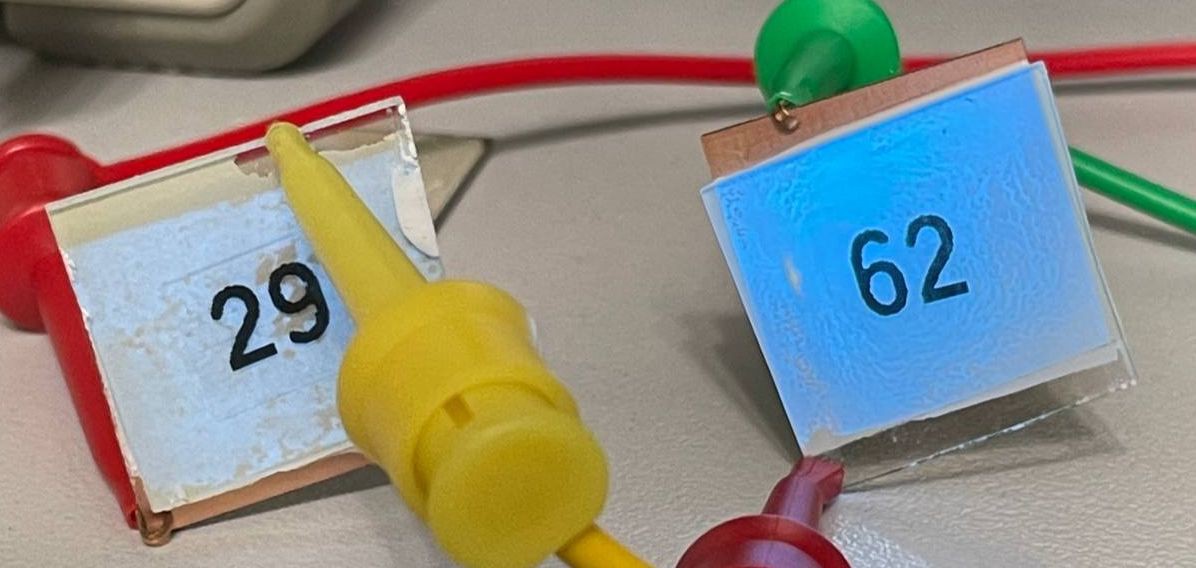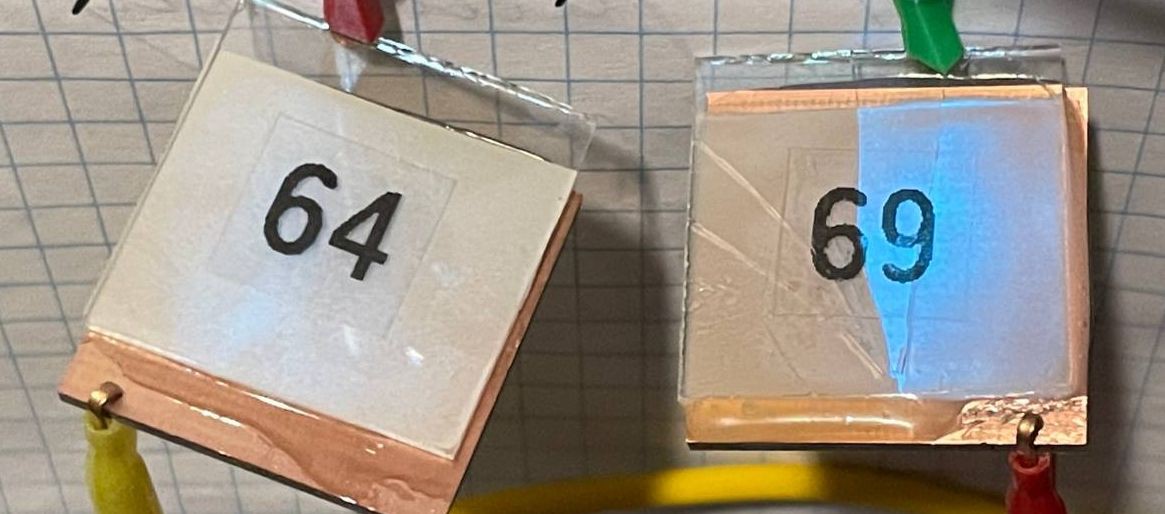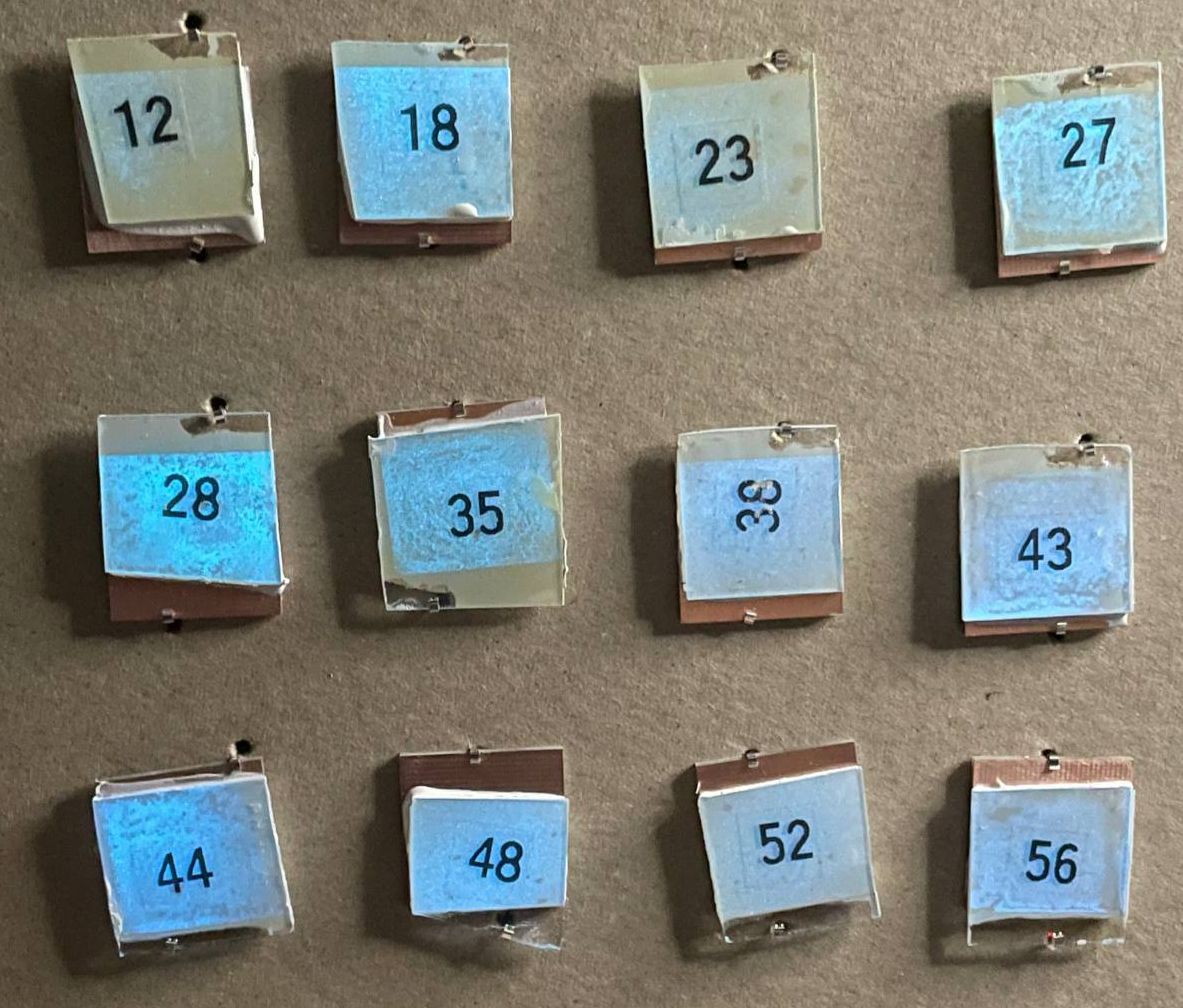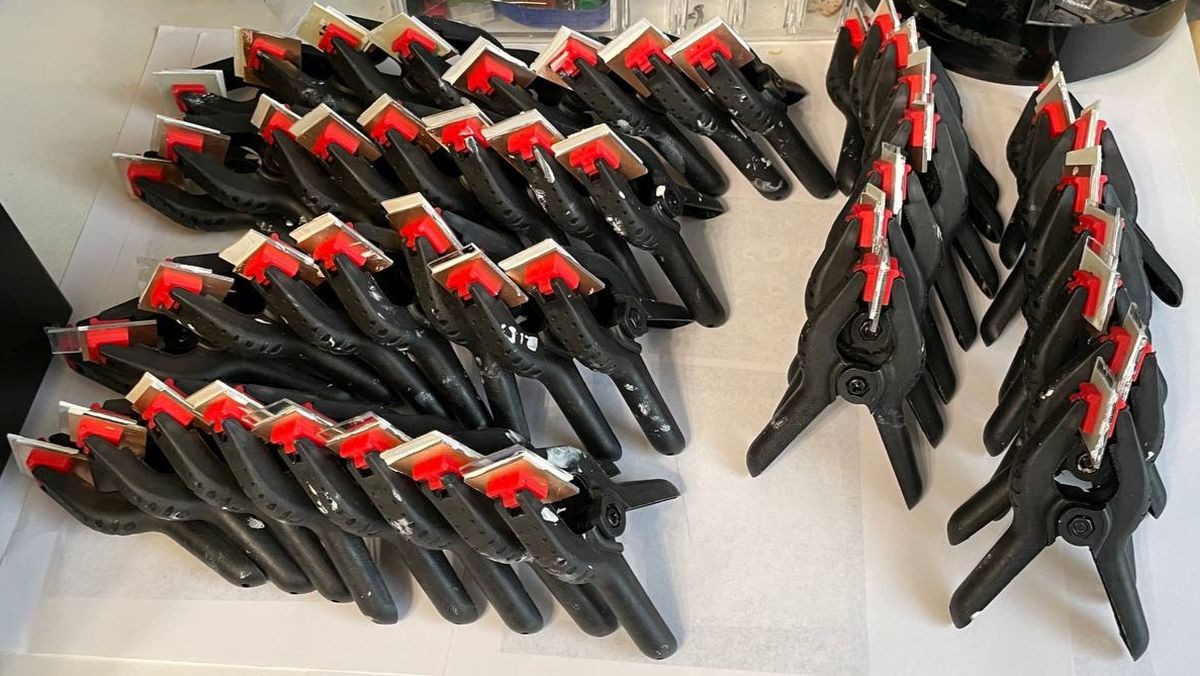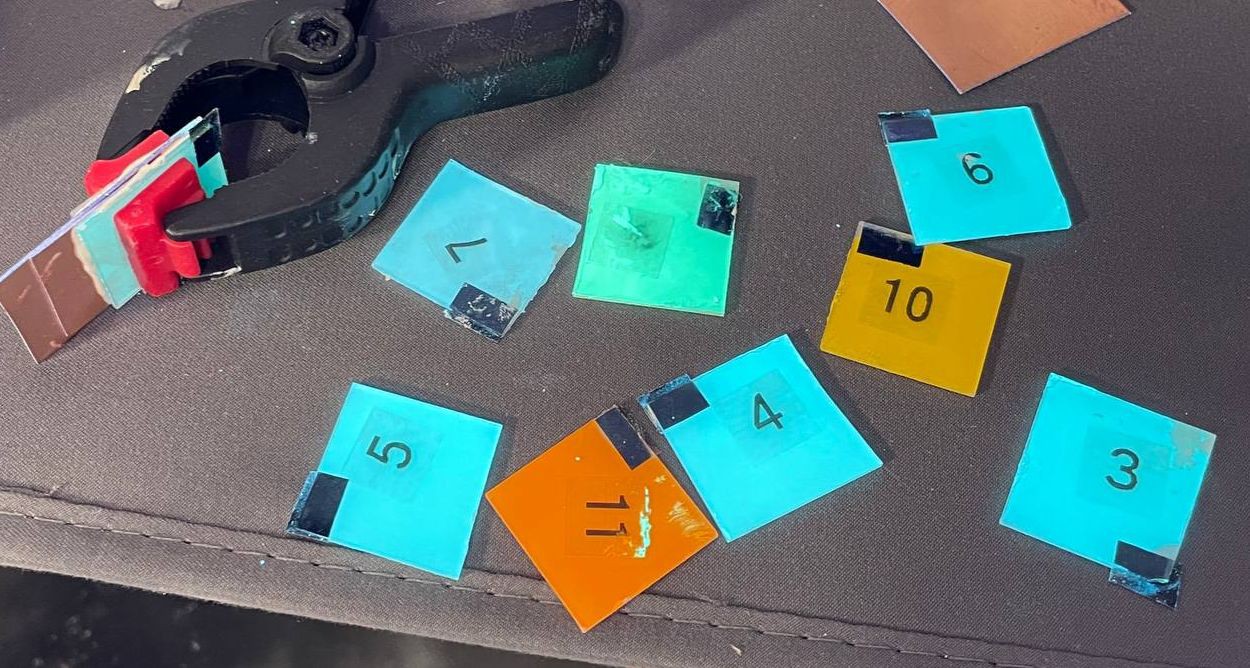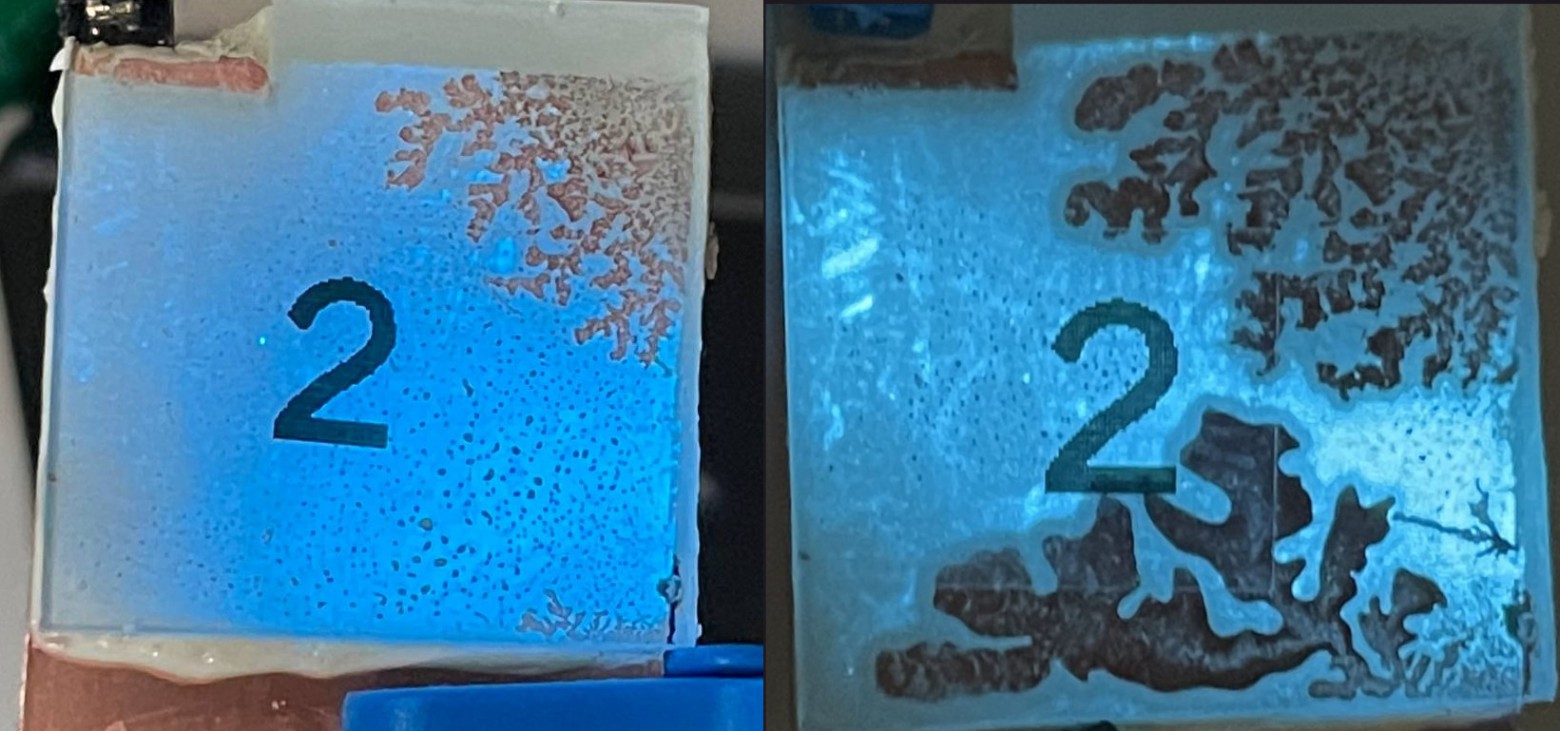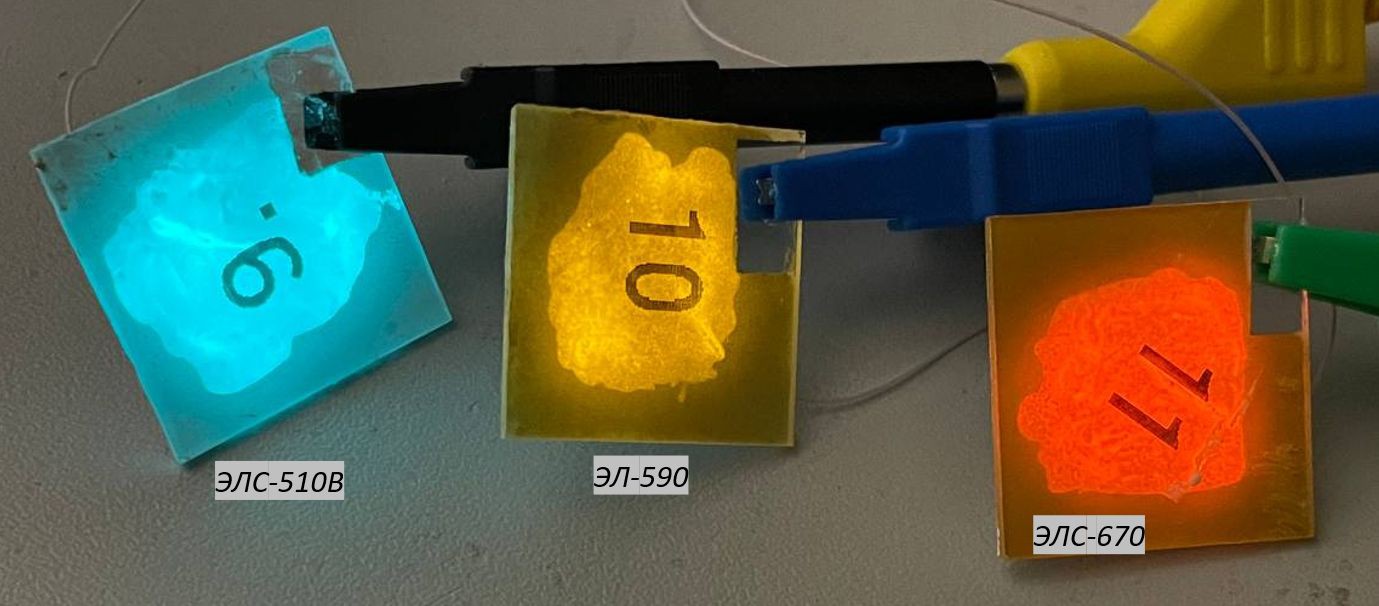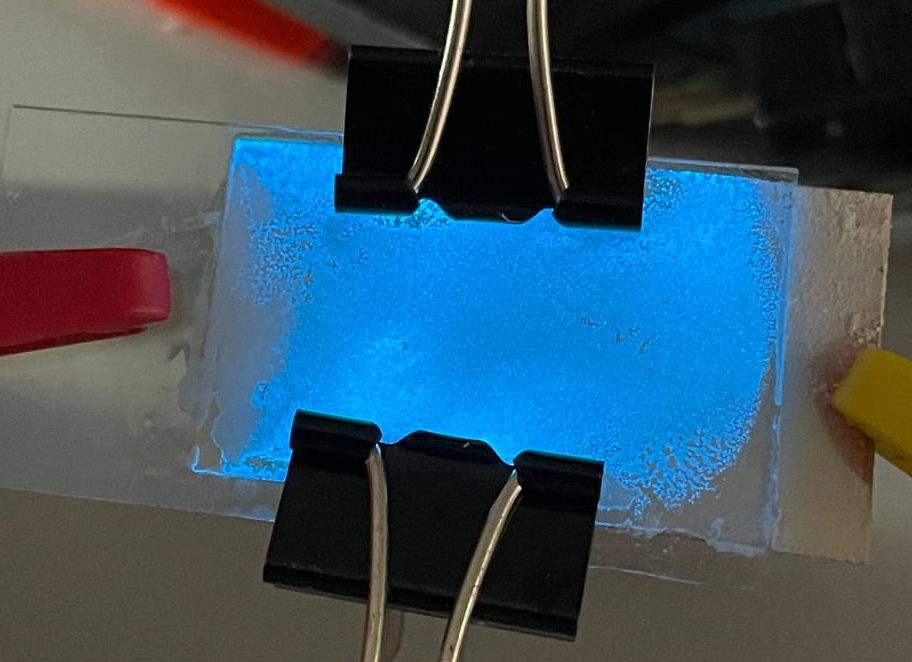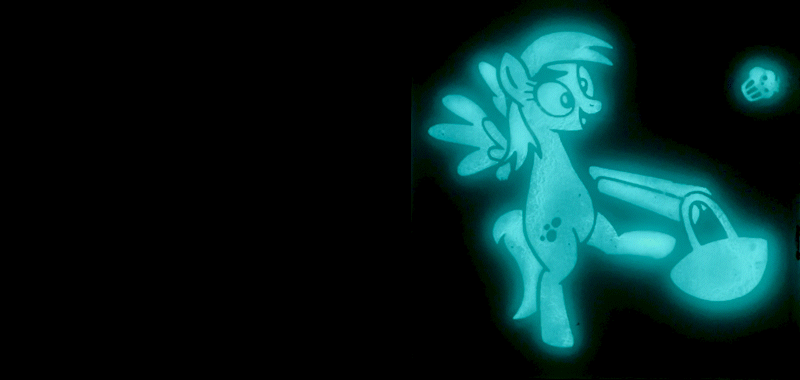-
Experiment No. 4
12/26/2021 at 15:17 • 0 comments![]()
Winners of the fourth experiment.
In this experiment, I decided to grind the phosphor layer into the plane, and then immediately glued the back electrode without applying an additional dielectric layer. And lo and behold - samples No. 62 (EL-455 + EP-2146) and No. 68 (EL + 455 + Boxepox) really glow much brighter than samples No. 29 or No. 44, respectively, having the same composition, but at 3-4 times the thicker of the package:
![]()
The composition of the samples is the same (EL-455 + EP-2146), but No. 29 has a thicker dielectric layer and was not polished
The thickness of the package here was 70 and 150 µm for No. 62 and No. 68, respectively - therefore No. 68, based on epoxy, boxepox glows weaker
But you can see that No. 62, based on EP-2146, is covered in stains, and on the basis of epoxy Boxepox glows very evenly.
By the way, thermo nozzles can also be used as a substance for gluing, although the brightness will be very poor. The main thing is to glue on an electric stove so that the thermo nozzles are really liquid. Somehow I'll have to try mixing barium titanate in them and see what happens ...
![]()
Samples glued with thermo-nozzles. The glass of No. 69 cracked during gluing, but this did not prevent it from starting at least halfway.
-
Experiment No.3
12/24/2021 at 17:11 • 0 comments![]()
For the third experiment, I bought three different two-component epoxy resins, which ended up with 4 binders for the phosphor and three for the dielectric layer, plus titanium dioxide and barium titanate as the filler for the dielectric layer - a total of 12 combinations. For each of them, I made 4 samples, having received a total of 48 indicators. They all worked - I turned them on on the stream on the live channel. Together with the audience, we chose one sample in each group, turned them on in parallel, and left them overnight. Until the sun rose, the brightness was kept at the same level, which is already fine
And I got the leaders - epoxy parquet varnish and boxepox epoxy.
![]()
The main mistake of this experiment was that I did not grind the phosphor layer, but applied a rather thick dielectric layer on top of it, and then glued it to it! As a result, the total layer thickness was over 300 micrometers! This is a lot.
-
Experiment No.2
12/23/2021 at 18:20 • 0 comments![]()
As part of the second experiment, I decided to play a little with the compositions, application methods, colors, and conductive glue.
As a result, I realized that alkyd varnish cannot be used. After drying, the brightness really goes to almost zero. The likely reason is the low dielectric constant - the higher the binder has - the brighter the phosphor will glow.
But I discovered EP-2146 epoxy parquet varnish. It gives excellent brightness, although it sins with stains. True, they cannot glue the bag together, since it will not dry out between the electrodes, and if it does dry, it will leak out; and the indicator will be covered with beautiful patterns. But it will continue to work. So for gluing the package, it is necessary to use strictly two-component compositions:
![]()
Sample No.2 after 10 and 30 hours of gluing.
I also found out that barium titanate must be added to the dielectric layer. It's, like a ferroelectric, significantly reduces the ignition voltage of the indicator and, therefore, increases the brightness. If, for example, you glue the indicator on a pure epoxy and epoxy with an admixture of BaTi, the second option will glow many times brighter.
In addition, I checked that you can apply the emitting layer just with a regular brush. Especially if the phosphor is coarse, it will immediately clog the airbrush.
And also, conductive glue can be used as a back electrode. For example, the silver-containing KONTAKTOL. Only apply in several layers and let dry:
![]()
-
Experiment No.1
12/22/2021 at 19:56 • 0 commentsIn Experiment One, I just decided to test the technology's viability.
![]()
To do this, I mixed barium titanate in an alkyd yacht varnish in a 1: 1 ratio and applied it with an airbrush in a thin layer on a PCB strip. Then I applied a layer of a mixture of blue phosphor EL-455, again in alkyd yacht varnish in a ratio of 2: 1, and then glued conductive glass on top with a drop of alkyd varnish. This sample No. 1 worked, although, after a week of lying on the shelf, it darkened noticeably and almost completely lost its brightness. In attempts to squeeze at least something out of him, he burned out and will never shine again.
-
self-made EL Derpy Hooves
12/21/2021 at 19:32 • 0 commentsI made four 2x7 segment displays, two lighting panels and two Derpy hooves.
![]()
Self-made EL segment displays
How to make your own display with almost any configuration just using a paintbrush
 Artem Kashkanov
Artem Kashkanov